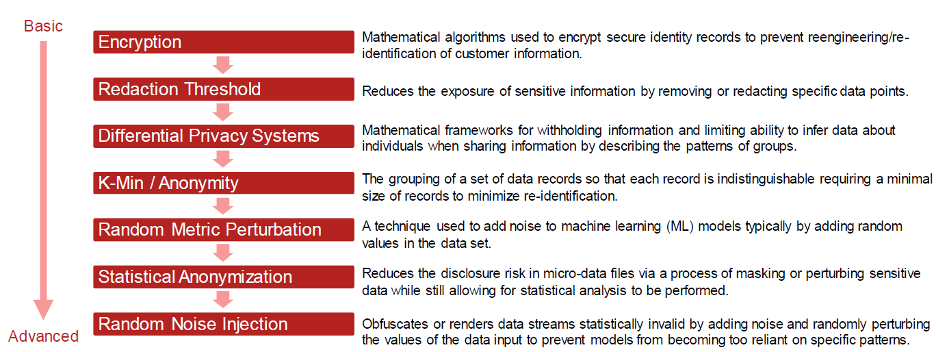
With the limitations of Walled Gardens, the concept of “Hedged Gardens” emerged for a more balanced approach for data collaboration.
In the dynamic landscape of data management and privacy, a transformative shift is unfolding, steering the way organizations manage and share data. This shift, heralded by the advent of decentralized data clean rooms, is giving rise to ‘Hedged Gardens’ and ‘Clean Houses’, signifying a progressive evolution from the traditional ‘Walled Gardens’. This transformation is underpinned by advancements in data clean rooms, differential privacy, identity resolution, and the burgeoning need for interoperability, setting the stage for a more collaborative and secure data environment.
“Advances in data clean rooms is a testament to how fast ad tech adopts a new technology when it unlocks utility,” said Shailley Singh, EVP of Product and COO at IAB Tech Lab. “Data clean rooms are a viable option for activation of audiences and reconciling measurement in a privacy safe manner while keeping the data within your custody and policy controls”
Traditionally, organizations have operated within ‘Walled Gardens’, a term used to describe a closed ecosystem where all operations are controlled and confined within the boundaries set by the organization. While this approach offers control and security, it limits the potential for collaboration and innovation, as data cannot be easily shared or leveraged outside the organization’s walls.
Hedged Gardens: A Balanced Approach to Data Collaboration
The concept of ‘Hedged Gardens’ emerges from the limitations of Walled Gardens. Unlike a walled environment, Hedged Gardens allow for controlled data collaboration between different entities. These environments are meticulously designed with ‘hedges’ – not impenetrable walls – symbolizing the balance between data privacy and data utility. Organizations can collaborate and derive insights while ensuring that the data remains secure and privacy is not compromised.
“We typically talk about Data Clean Rooms as a mechanism to activate data for targeting, but there is a whole use case of enriching data with insights, offering Hedged Gardens a unique opportunity to provide advertisers with incremental value,” said Mebrulin Francisco, Global Head of Data Strategy & Martech at EssenceMediacom. “As a Data Strategist, I can directly enrich my client’s customer data with key publisher data; getting a fuller picture of what customers are consuming or purchasing directly from the source through automated and repeatable queries.”
At the heart of this transformation are decentralized data clean rooms. These secure environments enable the convergence, processing, and analysis of data from diverse sources without compromising the raw data’s confidentiality. By addressing privacy concerns, these clean rooms facilitate data sharing and collaboration that were once hindered by traditional models.
“Clean rooms are one of the most important tools in a data-driven retail media toolbelt. Data collaboration enabled by clean rooms can solve some of the most important issues in the industry today–like audience creation, transparent measurement, and robust identity graphs. Clean rooms and a co-op garden approach to data provide advertisers with access to near real-time insights and full-funnel measurement,” said Evan Hovorka, VP of Product and Innovation at Albertsons Media Collective. Adding that, “shoppers get the benefit of a personalized ad experience, and clean room partners are rewarded with industry growth and innovation—all boats rise with the tide.”
Match keys play a pivotal role in the efficiency of data clean rooms by serving as unique identifiers that connect related data from various sources. Created through identity resolution, these keys merge information about the same entity into a unified dataset, ensuring accurate analysis. Their importance is magnified in settings that require high interoperability, allowing for the fluid exchange and use of data across different systems. Match keys effectively act as a common language, facilitating the integration of data from diverse origins. Additionally, they are instrumental in bolstering data privacy. By anonymizing data before it’s shared or analyzed, match keys prevent the exposure of personal and sensitive information, aligning with strict data protection standards.
Identity resolution in the data clean room is the linchpin for unlocking unparalleled insights, driving informed decision-making, and ensuring precision. “In the dynamic landscape of today’s digital ecosystem, where customer interactions span multiple channels and devices, identity resolution forms the bedrock of a unified and holistic understanding of our audience while enhancing privacy through the use of pseudonymous identifiers rather than PII.” said Max Parris, Head of Identity Product at Liveramp. “This not only results in higher match rates, but also cleaner matches in collaborative use cases that take place in the data clean room. Identity resolution is not just a necessity; it’s the catalyst that propels us towards innovation, customer-centricity, and better business outcomes.”
In addition, implementing data clean rooms entails overcoming technical challenges such as integrating disparate data sources into a unified environment, ensuring data quality, and maintaining real-time processing capabilities, all while safeguarding data integrity and privacy. These challenges necessitate advanced data mapping, transformation techniques, and the use of high-performance computing resources. Despite their benefits, data clean rooms face limitations like potential data bias, the risk of creating new data silos, and significant technical and financial barriers, particularly for smaller organizations. To address these issues, organizations must establish clear guardrails and best practices, including rigorous data audit trails, transparent data processing methodologies, and the adoption of open standards for interoperability and accessibility, ensuring effective and secure collaboration within data clean rooms.
Clean Houses: Ensuring Data Integrity and Privacy
‘Clean Houses’ extend the concept of data clean rooms, emphasizing the importance of maintaining data integrity and privacy. In a Clean House, data is not only brought together but is also cleaned, processed, and stored in a manner that adheres to the highest standards of data privacy and security. This is where technologies like differential privacy and identity resolution play a crucial role.
Differential privacy is a framework designed to ensure that the privacy of individuals in a dataset is protected when statistical analyses are conducted. It achieves this by adding a certain amount of random noise to the data or to the outputs of queries on the data, making it difficult to infer information about any individual. The key is to balance the noise so that valuable, aggregate information can still be extracted without compromising individual privacy. The sensitivity of the queries—how much a single data point can affect the outcome—and the desired level of privacy (often quantified as a privacy budget) dictate the amount of noise that needs to be added. As this concept gains traction, tools and practices are being refined to apply differential privacy effectively, ensuring that data analysis can be both useful and privacy-preserving.
“Data Clean Rooms provide Hedged Gardens the opportunity to mobilize their consented 1st Party Data asset in a way that gives them complete control of the data collaboration process while maintaining tight reins on data governance practices. This is exciting to see.” said Mebrulin Francisco, Global Head of Data Strategy & Martech at EssenceMediacom. “And while data clean room technology will not solve all ad tech problems, they are a powerful tool within the tool kit. Providing the marketplace an opportunity for a safer, privacy-enabling solution to data collaboration.”
IAB Tech Lab’s Data Clean Rooms: Guidance and Recommended Practices Version 1.0 established common principles, functions, and privacy enhancing technologies for Data Clean Rooms and outlined some limitations and guardrails when engaging with DCR. In addition, with the Open Private Join and Activation Version 1.0, IAB Tech Lab provides a path to using the outputs of clean rooms in actual activation of first-party matched audiences while ensuring partners do not learn more than what they already know about the personal information of data subjects and the data does not leak while transacting in real-time bidding systems.
A Brighter Future with Collaborative Data Ecosystems
“Data clean rooms are the modern solution to the walled gardens of the past. Being able to securely share double-blind queries to different parties and collaborate on the same first-party data is a game-changer in how we’ll move forward from cookie deprecation,” said Rosemary DeAragon, Global Head of Retail & Consumer at Snowflake.
As organizations continue to embrace these advanced technologies, a new era of data collaboration is on the horizon, characterized by enhanced security, privacy, and mutual growth. With decentralized data clean rooms leading the charge, the future promises a more collaborative and secure data ecosystem. The advent of Hedged Gardens and Clean Houses marks a transformative moment in data management and privacy, ensuring that data collaboration is conducted in a productive and protective manner.
